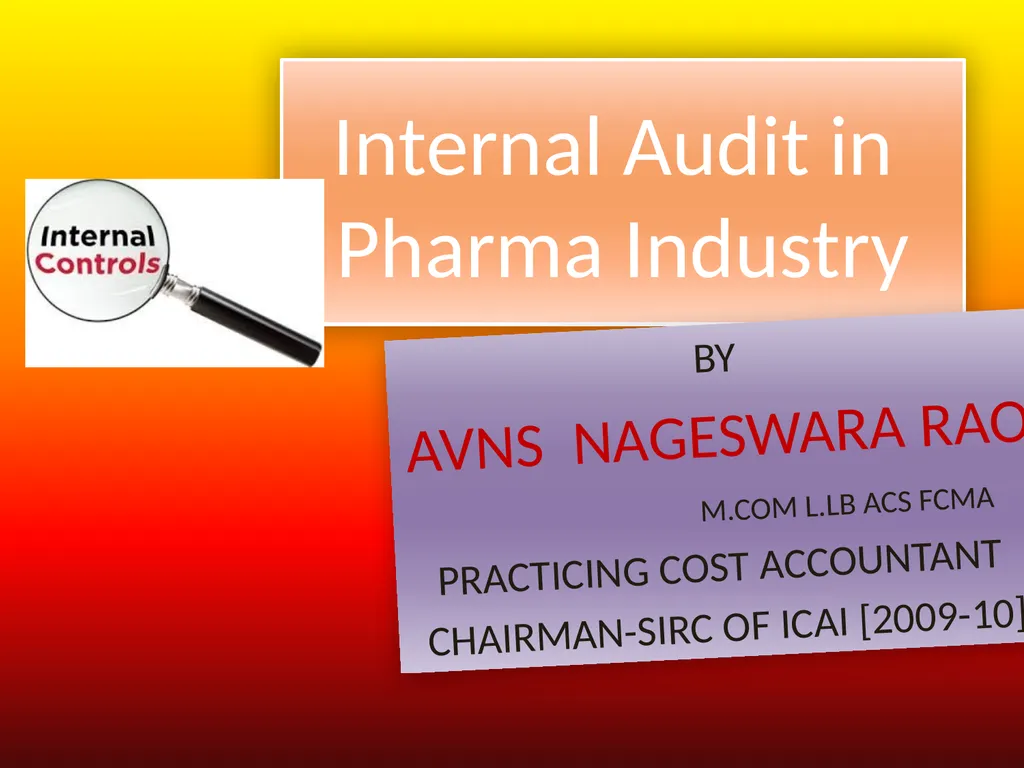
Internal Audit in Pharma Industry BY AVNS
Author: liane-varnes | Published: 2025-06-23
Description: Internal Audit in Pharma Industry BY AVNS NAGESWARA RAO M.COM L.LB ACS FCMA PRACTICING COST ACCOUNTANT CHAIRMAN-SIRC OF ICAI 2009-10 Internal Audit definition Chartered Institute of Management Accountants, UK (CIMA): An independent
Download Presentation
Download the PPT/PDF: Download
Transcript:
Loading transcript…